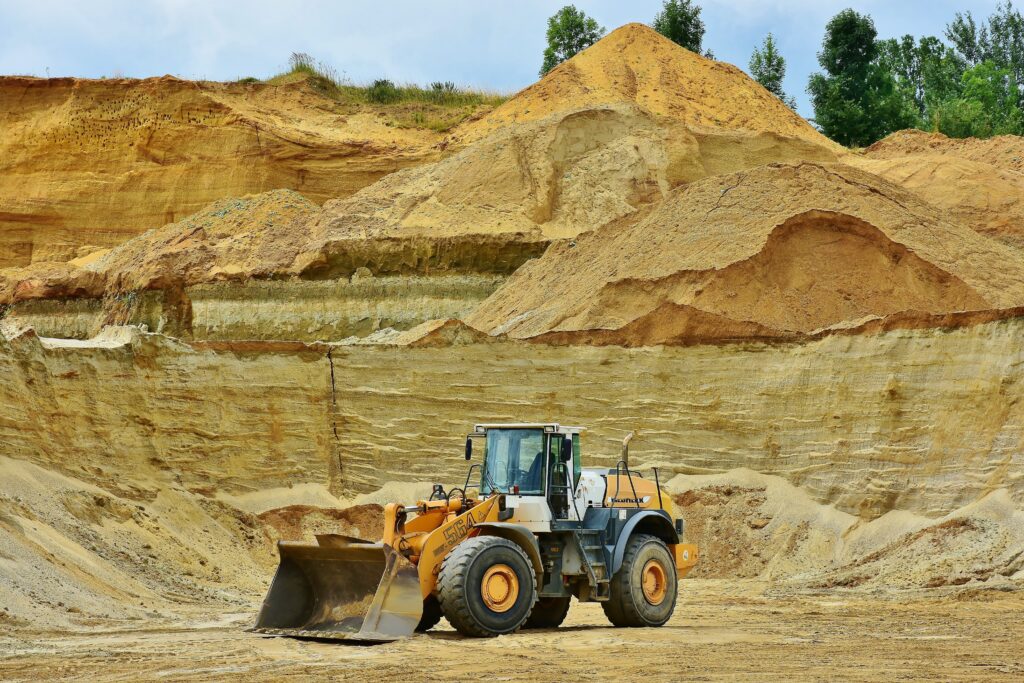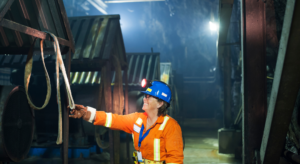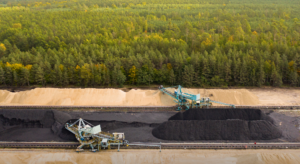The integration of digital technology and data-driven decision-making is transforming workplaces across industries. In mining, one of the most profound changes underway is the transition from decentralized, localized operations control to consolidated remote monitoring and management through enterprise operations centres, exemplifying remote monitoring practices in mining.
Enabled by sensors, connectivity, automation, and analytics, these state-of-the-art control facilities allow mining companies to visualize their entire operation. This is in real-time and optimize performance like never before. Yet establishing a successful operations centre requires more than just investment in technology. It necessitates evolving company culture, capabilities, and also work approaches. Furthermore, it helps to leverage the full potential.
This article will analyze examples of leading remote operations centres in mining, detailing their structure, activities, technologies, and impact. We will also review expertise, layout considerations, change management techniques, and steps. These are required to build an effective facility. The transition doesn’t come easy. However, organizations that embrace the future of integrated, data-driven mining can unlock substantial gains. So, let’s look at the remote monitoring practices in mining.
The Heavy Cost of Decentralization
Most mining 4.0 operations still function in a highly decentralized manner. This is with planning, maintenance, processing, logistics, and field teams working in siloed business units. Furthermore, data lives in disparate sources, coordination is ad hoc, and decision-making relies heavily on the intuition and experience of local personnel. This is rather than data-driven analytics.
While this model served adequately in the past, inefficiencies resulting from fragmented processes and information are now incurring substantial costs including:
- Critical interdependencies between mine planning, maintenance scheduling, and processing operations go unrealized without integrated data. It results in suboptimal resource allocation and delays that nip productivity.
- Lack of real-time coordination and visibility across the value chain leaves substantial throughput improvement opportunities undiscovered. Moreover, operational constraints go unidentified.
- Shift handovers and crew rotations lead to information gaps without digital workflows and centralized data to ensure continuity. Time is also lost rediscovering known issues.
- Control decisions based on gut feel rather than analytics lead to high variability. This is in key parameters like ore quality, equipment effectiveness, and also energy consumption.
- Response to disruptive events like weather delays or equipment failures is slowed. This is by reliance on tribal knowledge that stays isolated locally.
By breaking down silos and transitioning to integrated, data-driven operations managed remotely, miners can resolve many of these entrenched challenges. Now let us know deeply as to what are remote operations centre.
Introducing the Remote Operations Centre
Modern Mining 4.0 remote operations centres (ROCs) represent purpose-built facilities. It consolidates data across departments, assets, and activities. This is a hub for enhanced coordination, visibility, and rapid decision-making.
Enabled by sensors, automation, analytics, and connectivity, ROCs grant teams shared situational awareness and the ability. This is to control operations in real-time from afar. Expertise is also centralized rather than siloed into remote field locations.
Capabilities and Features
While implementations vary based on needs, ROCs at their core aim to provide:
- Monitoring and visualization of critical mining processes and asset health indicators via dashboards. This is using sensor data from equipment and industrial control systems.
- Role-based delivery of information. It is to ensure relevant data reaches each team and user, avoiding overload.
- Advanced pattern recognition and predictive analytics for data-backed decisions rather than intuition.
- Structured shift schedules and procedures for effective hand-offs and continuity across roles.
- Remote control of equipment and other operational technology where applicable.
- Collaboration support through videoconferencing, chat, and digital twin simulation.
- Playback of operating data for learning and continuity during shift changes.
- Simulation of scenarios and decision impacts before implementation in the field.
Realized Benefits
Mining 4.0 ROCs drive value through:
- Optimized planning and scheduling by leveraging integrated data on equipment/team availability and material flows.
- Fewer unplanned disruptions through early detection thanks to real-time monitoring and predictive analytics.
- Continuous improvement powered by centralized data analysis versus siloed operations.
- Reduced on-site headcount requirements with remote coordination and automation.
- Improved safety by removing workers from hazardous environments.
- Lower emissions via operational optimization, automation, and reduced personnel transport needs.
While upfront investment is substantial, experts estimate ROCs can enable productivity improvements. It can be upwards of 10-20%, delivering rapid ROI for proactive adopters. Let us move ahead and look at some of the leading centres.
Leading Mining Remote Operations Centres
Miners around the world have invested heavily in remote operations centres. This is to improve visibility, coordination, and also decision-making across their assets and teams. So, some leading examples of successful implementation of remote monitoring practices in mining include:
Rio Tinto’s Integrated Operations Centre
Consolidating monitoring and control into a state-of-the-art facility in Perth allowed Rio to improve Pilbara iron ore output by over 10%. This is while reducing site staffing by a third. Furthermore, enhanced visualization, coordination, and optimization across planning, processing, equipment, and logistics drove the gains.
Teck Resources Elkview Operations Centre
Open since 2014, Teck’s Elkview operations centre remotely coordinates its multiple British Columbia mines. Furthermore, it uses integrated planning, dispatch, and production data feeds. Moreover, throughput has grown 20% since adopting this centralized model or remote monitoring practices in mining.
Fortescue’s Integrated Operations Centre
At Fortescue’s state-of-the-art IOC, integrated control teams oversee mine, rail, port, and shipping. This is for 150 million tonnes of annual iron ore production across Pilbara mines. The facility was also key in enabling automated haulage adoption.
Now let us look at the answer to what are best mining practices.
Remote Monitoring Practices in Mining Critical Components for Success
Transitioning from decentralized, legacy mining models to integrated remote operations is no simple task. Moreover, success requires a focus on evolving people, processes, and technology in parallel when it comes to remote monitoring practices in mining:
Remote Monitoring Practices in Mining: Building a Multidisciplinary Team
To leverage the capabilities of an integrated remote operations centre, mining companies need a diverse range of specialized experts including:
- Data scientists to develop predictive analytics, simulations, and digital twins. It helps to optimize planning and decision-making.
- Ops research experts to create optimized schedules and resource plans. This is across interconnected mining value streams.
- Multi-discipline engineers to enable rapid root cause analysis and troubleshooting. This is by leveraging data across traditional teams.
- Change management specialists to engage personnel through the transformation and address concerns about changes in roles.
- IT/OT convergence specialists to bridge gaps between information and operating technology systems.
- Training developers to reskill the workforce on digital workflows and also data-backed decision-making.
Remote Monitoring Practices in Mining: Managing Organizational Change
Transitioning to integrated, data-driven operations constitutes a major cultural shift for mining companies. Moreover, careful change management ensures personnel understand the benefits:
- Engage frontline workers early. Be transparent about how roles will evolve rather than be eliminated. Also, provide reskilling support.
- Phase in changes gradually starting with non-critical processes before moving to mission-critical areas.
- Maintain consistent messaging around timelines and ROC goals at all levels of leadership.
- Celebrate small wins publicly. Quantify and communicate metrics showing early gains in safety, costs, or output from the new approach.
- Proactively address tensions between information and operating technology teams. They must now collaborate closely under one roof.
Remote Monitoring Practices in Mining: Facility Layout and Design
To enable teams to leverage data effectively, ROCs should physically embody principles of visibility, collaboration, and flexibility:
- Prominent wall displays vividly illustrate key process metrics and alerts. It helps to build situational awareness.
- Control room ergonomics keep teams comfortable monitoring data across long shifts.
- Informal breakout areas facilitate quick offline discussions to solve pressing issues.
- Meeting rooms with audiovisual systems streamline communication with offsite personnel.
- Reconfigurable furniture and layouts adapt as roles and workflows evolve.
- Isolated infrastructure safeguards industrial control systems from external cyber threats.
Remote Monitoring Practices in Mining: Integrating Enabling Technologies
An array of open, scalable technologies provides the foundation for effective remote operations centres. Also, ROCs further rely on a backbone of open, scalable technologies:
- High bandwidth, low latency network infrastructure with redundancy to prevent connectivity disruptions.
- Interoperable sensors, drives, and equipment using standard protocols to avoid proprietary lock-in.
- Enterprise IoT software to ingest, contextualize, and analyze millions of real-time data points.
- Scalable data lakes and warehouses. This is for storing massive volumes of structured, unstructured, and time-series data.
- Advanced analytics and data science tools including machine learning, simulation, and also optimization algorithms.
- User-friendly visualization to operationalize analytical insights for decision-making in real-time.
Securing stakeholder support for the significant investment required to execute these technology capabilities is imperative answering what are best mining practices.
Fulfilling the Promise of Remote Operations
New technology is changing how mining works. Remote operations centres are the next big thing because they use data to coordinate work from far away. This change is not just about technology; it also requires changes in tools, culture, and skills. However, the benefits, like better planning, faster responses, lower costs, and also more output, make it worthwhile.
Companies that don’t adapt to these changes might lose out to others who do. Learning from successful examples, like Rio Tinto’s Pilbara ROC, shows that the way mining is controlled is changing. Moreover, companies getting ready for this change through remote monitoring practices in mining will be leaders in the next digital revolution in mining.
If you’re interested in the future of mining and want to connect with others, there’s an event on 17-18 January 2024 in Phoenix, AZ, called the 4th Mining 4.0: Roadmap for the Future Americas summit. It will explore these changes happening in the mining industry, remote monitoring practices in mining, and more. Don’t miss out – be part of it now!





